
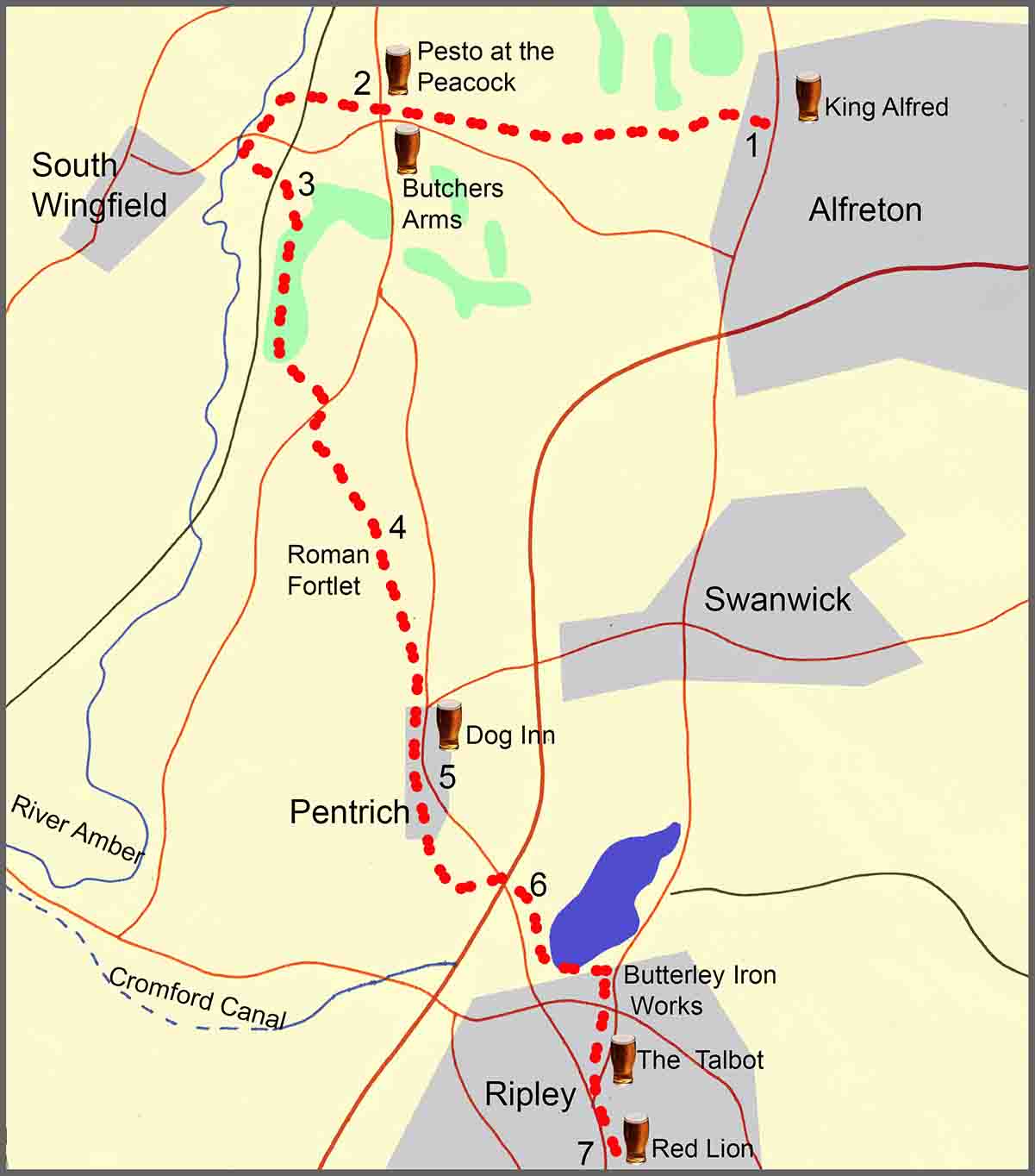
About this walk
The walk described below starts from Alfreton and passes through Oakerthorpe, South Wingfield and Pentrich before finishing in Ripley. However, the start and finish points are interchangeable, with good bus services from both Derby and Nottingham.
The overall route covers just over six miles covering undulating footpaths and bridle ways. There are six pubs featured en-route, serving good cask ales; so, at just over six miles, it’s a comfortable three-pint walk, allowing you to arrive home calorie neutral and none the worse for wear. The pubs are: The King Alfred at Alfreton; Pesto at the Peacock and the Butchers Arms at Oakerthrope; The Dog Inn at Pentrich, and the Talbot and J D Wetherspoon’s Red Lion at Ripley. Other good pubs are available at Alfreton and Ripley.
As well as the good ale, there are also along the way a number of points of historical interest covering the last two thousand years. These include: Alfreton Hall and the Palmer Morewoods; the Peacock Inn; Wingfield Manor Colliery at Oakerthorpe; Wingfield Manor at South Wingfield; the Roman Fort and Roman Road near Pentrich; the 1817 Pentrich Revolution; Pentrich Colliery; the Butterley Ironworks and the Butterley tunnel; and Barnes Wallis, the inventor of the WWII dam-busting ‘bouncing bomb’.
The route description
1. Walk to the back of Alfreton Bus Station and carry on through the shopping centre until you reach High Street where you will turn left. Walk to the end of High Street and, with the war memorial straight ahead of you, cross over the road junction to enter Church Street. Continue along Church Street to St Martin’s Church in whose grounds can be found the Mausoleum of the Palmer-Morewoods. Walk through the church yard and take the footpath with the farm to your left. At the bottom of the footpath, bear left onto the farm track and follow this for almost half a mile until it ends at a gate and a stile leading into a field. Over the stile, go straight across the middle of the field and into the next field. Here, the footpath runs immediately to the right of the hedgerow of another four fields taking you in the direction of the Peacock Hotel, the large white building which you will see ahead of you in the distance. The final field leads onto a short farm access road leading directly to the main road, with the Peacock Hotel to your right and Melrose Way across the road to your left.
The Palmer-Morewood family of Alfreton were the main local landowners and coal mine owners in the 18th and 19th centuries. Nearby Alfreton Hall, built around 1724, was the Palmer-Morewood family seat until 1957 when it was acquired by Derbyshire County Council who converted what remained of it into an arts and adult education centre. An inn at Oakerthorpe dating back toi the 11th century is mentioned in the Domesday Book, when it was known as Ufton Barnsand. Rebuilt in 1613, and renamed the Peacock Inn, it is reputed that Dick Turpin, one of the most famous highwaymen in English history, stopped there on his ride to York. It is also said that an underground passage in the bottom of the cellar in the Peacock Inn leads to nearby South Wingfield Manor where Mary Queen of Scots was imprisoned in 1569, 1584 and 1585.
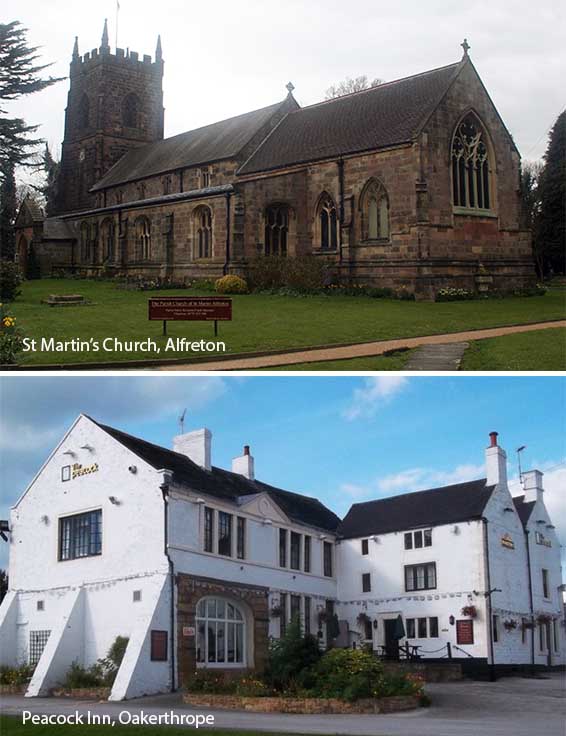
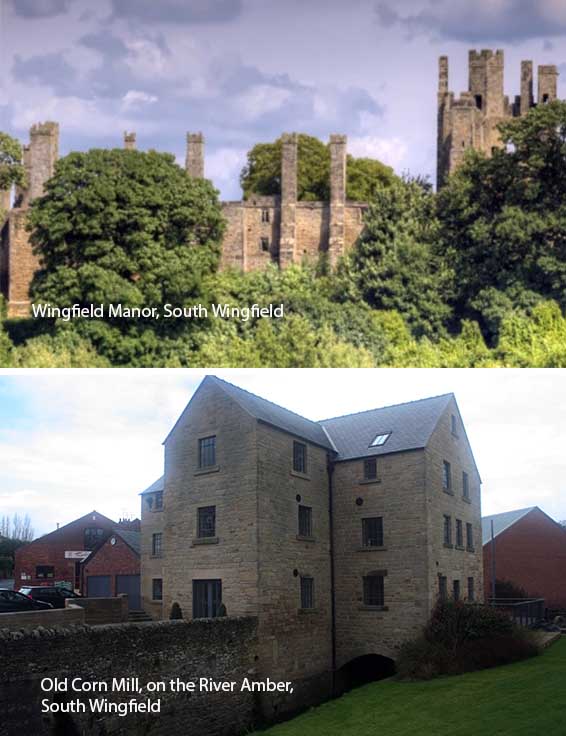
The ruins of Wingfield Manor, standing high above the village of South Wingfield, were the romantic setting for scenes from the films, `The Virgin & the Gypsy’ and Zefferelli’s adaption of `Jane Eyre’. The ruins have also been featured in the TV series, `Peak Practice’. This monument to late medieval wealth was built in the 1440s for the powerful Ralph, Lord Cromwell, Treasurer of England. Later, it became the home of Bess of Hardwick’s husband, the Earl of Shrewsbury, who imprisoned Mary Queen of Scots here in 1569, 1584 and 1585. Now in the care of English Heritage, Wingfield Manor is part of a working farm and no public access is allowed except by pre-booked guided tours. South Wingfield also has a strong connection with the 1817 Pentrich Revolution. Two of the three ringleaders were from South Wingfield and the rebels began their march from the village with the only person killed dying in Wingfield Park.
Wingfield Manor Colliery, or “Oaky” as it was known because of its proximity to Oakerthorpe, began operation in 1906. It merged with Swanwick Colliery in 1963 before closing in January 1964. It was one of the first mines to install pithead baths in 1932 and during the peak of its production in the early 1950’s it produced between 3 and 400,000 tones per year with a workforce of around 600 men. The pit headstocks and winding gear have long gone and the massive slag heap has been landscaped and wooded and now forms a continuation of Shaw Wood. Further into Shaw Wood, there is evidence of collapsed bell pits from where iron stone, smelted in a nearby foundry, was believed to have been used in the construction of Bess of Hardwick’s hall. The Roman fortlet at Castle Hill, believed to have consisted of a wooden enclosure surrounded by earthen mounds and ditches, is said to date back to the 1st century AD. The ancient Roman Road, Rykneld Street, from Little Chester in Derby to Chesterfield, runs close by the fortlet.
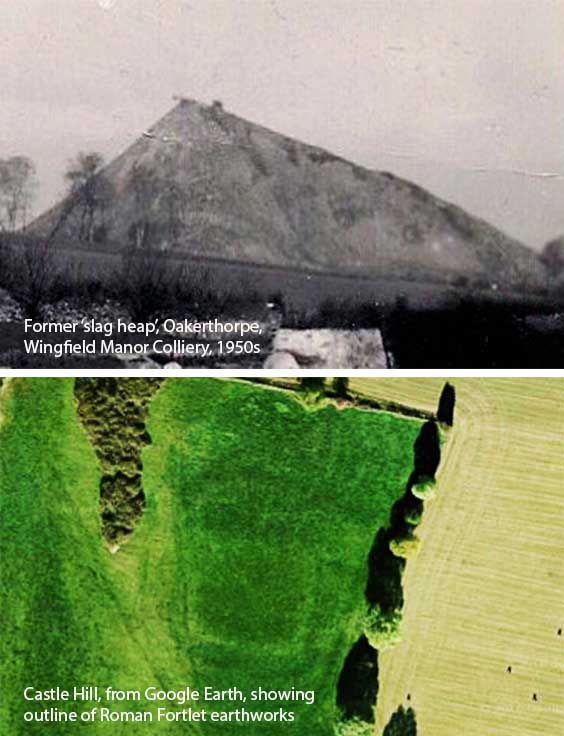
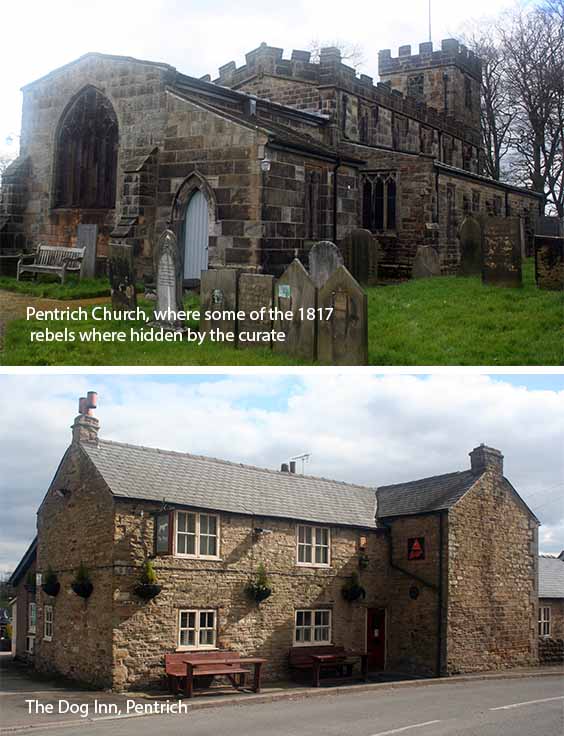
The 1817 Pentrich Revolution began when a gathering of some two or three hundred men, mainly stockingers, quarrymen and iron workers, lightly armed with pikes, scythes and a few guns, set out from South Wingfield to march to Nottingham. They were unhappy with rising unemployment and the general economic depression following the end of the Napoleonic Wars, the impact of industrialisation upon cottage industries, and the increase in food prices associated with the Corn Laws and recent bad harvests. One of the rebels, who turned out to be a government spy, falsely led the men to believe that they would be joined by a larger revolutionary group coming down from the north. The men got as far as Giltbrook, not far from Nottingham, where they were met by soldiers from the 15th Regiment of Light Dragoons. The rebels scattered and, while about forty were captured some of whom were later jailed or transported to Australia, the leaders managed to escape but were later arrested with three of them being hanged and beheaded at Derby Gaol.
The main shafts at Pentrich Colliery, owned by W.C. Haslam, were sunk in the 19th century and records from 1896 show that it employed 208 men. The pit closed in 1944, not long before the nationalisation of the coal industry. The Butterley Tunnel is one and three-quarter miles long, allowing the Cromford Canal to pass from Butterley, through the high ground around Ripley, to exit at Golden Valley on its route to Ironville and Langley Mill beyond. When the tunnel opened in 1794 it was the third longest tunnel in the world. About 880 yards from the tunnel’s Butterley entrance there is an underground wharf which had a tunnel connecting directly to the Butterley Company’s Butterley Carr Pit, and also vertical shafts which allowed coal and iron ore to be lifted up to the Butterley Company’s works. In the late 19th century the tunnel partially collapsed, was closed, repaired and then, after another partial collapse, was finally permanently closed to through traffic in 1900. However, the Butterley entrance continued to be used for many more years to provide access to the underground wharf.
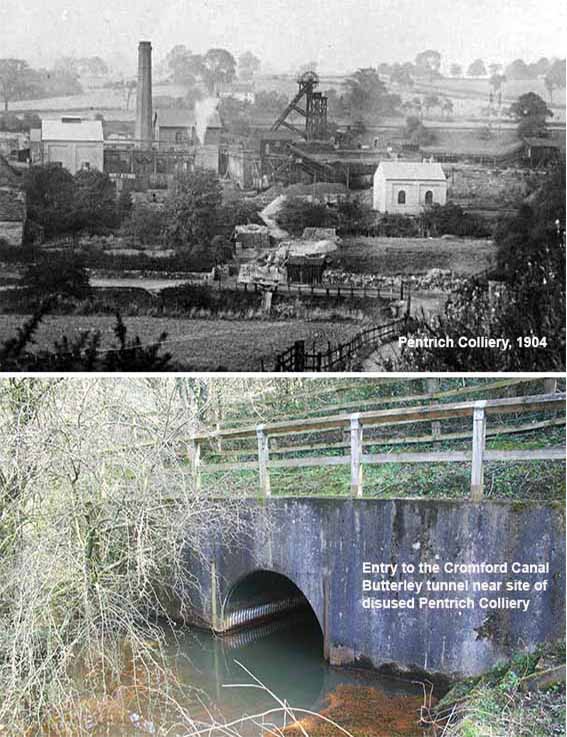
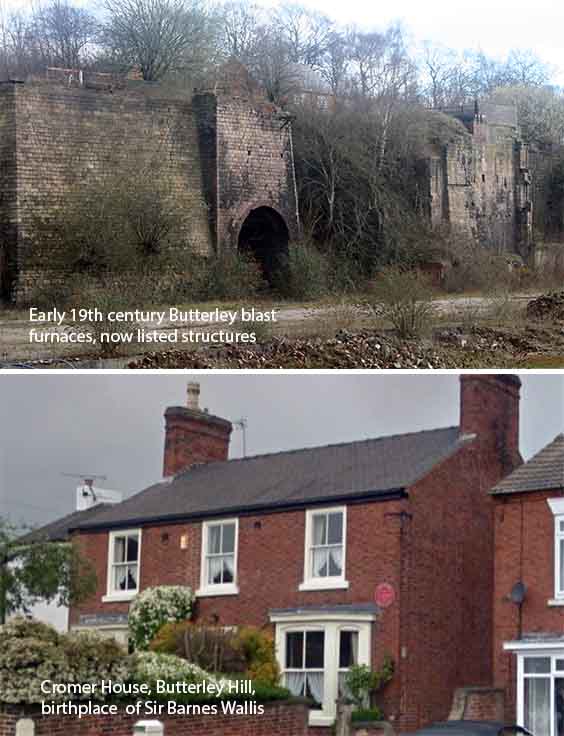
In the early 1790s, when William Jessop and Benjamin Outram began excavating the Butterley tunnel as part of the construction of the Cromford Canal, significant deposits of coal and iron were discovered. This led to the creation of the Butterley Company which continued to grow throughout the nineteenth century and in 1868 the company supplied and built the ironwork for the arched roof of St Pancras station in London. At its peak in the 1950s, 10,000 people were employed in its collieries, ironworks, brickworks and engineering works. The Butterley Company ceased trading in 2009 and most of the buildings have been demolished but the original blast furnaces, gate house, and underground wharf, remain as listed structures. Butterley Hall, the home of Benjamin Outram was acquired by the Derbyshire Constabulary as their headquarters. Sir Barnes Wallis was born in 1887, in Cromer House on Butterley Hill. He designed the Wellington and Wellesley bombers, and developed the swing wing plane, though he is best known for inventing the ‘bouncing dambuster bombs’ which, in 1943, breached the Ruhr Valley Dams, in the heartland of industrial Germany.
